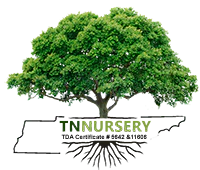Giant Ostrich Fern
The Giant Ostrich Fern Matteuccia struthiopetris is native to eastern North America. The fern grows in large, vase-shaped clusters known as crowns. As its name suggests, the fern has showy, sterile fronds that resemble the tail feathers of an ostrich. It has deciduous green fronds that grow vertically up to 65 inches in height and 13.8 inches in breadth. The fronds are dimorphic, with differing male and female fronds.
Where To Plant Giant Ostrich Fern
It prefers growing in damp, shady areas that receive indirect sunlight like other fern species. This fern can grow in different soil types, including clay, loam, and sand. It is a common ornamental plant cultivated by people in their gardens. When grown, they first produce sterile shoots known as fiddleheads. The fiddleheads can be cooked as vegetables and are a popular delicacy in the rural parts of northeastern North America. The fronds, which produce fronds, grow a few weeks after fiddleheads and are primarily involved in reproduction. The fronds can grow up to 20 inches in height. While they can grow naturally from spreading spores, acquiring them from a trusted agronomist would be best. Under optimal conditions, they can spread quickly and form new, dense colonies through their underground rhizome roots. They feature, coupled with their showy nature, enables them to create pleasing views wherever it grows. It is one of the largest fern species growing in the world.
Giant Ostrich Fern Care And Maintenance
Giant Ostrich ferns are easy to care for and maintain. Its maintenance is primarily cosmetic and usually involves clearing debris from the plant during its dormant phase. A little fertilizer and frequent watering will go a long way in making the ferns healthy. Another thing that makes them a low-maintenance plant is its deer and rabbit resistance. They are suitable for shady gardens and can also do better as a household plant.
Read lessQuantity
In Stock
Sold out







